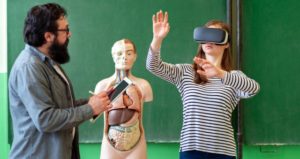
My Second Conversation with ChatGPT: Can It Be My Teaching Aid?
Not long ago, I had a conversation with ChatGPT to find out how well it would do in a course I teach for professors at

Not long ago, I had a conversation with ChatGPT to find out how well it would do in a course I teach for professors at

There is debate recently on student use of ChatGPT, a chatbot using a large language model (LLM) which uses machine-learning algorithms to understand natural language

I have seen friends on Facebook create decent songs and stunning artistic creations with little knowledge of music or art, all after spending a bit

The November newsfeed heralded the arrival of AI essay writing. AI (or Artificial Intelligence) essay writing recruits online software that sifts through information and generates

This article first appeared in the Teaching Professor on August 7, 2018. © Magna Publications. All rights reserved. Just as all students are different, so are all

As teachers embrace digital tools for online learning, many online tools can enhance and facilitate the organization and delivery of courses. Google Docs, Google Sites,

The thought of teaching technology at a distance can be intimidating and downright scary. How can professors teach hands-on technology skills to students from afar?

No matter your specific discipline, teaching in the 21st century can often feel like you need an advanced degree in IT if you want to

We live in a time of never-before held access to information, which means educators must compete with a wide-ranging array of media for the finite

On August 6, 1991, the World Wide Web became public to the world and forever changed the way that ideas move. Although in-person dialogues and interactions
Get exclusive access to programs, reports, podcast episodes, articles, and more!